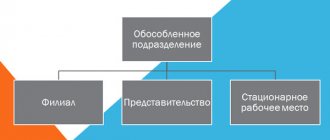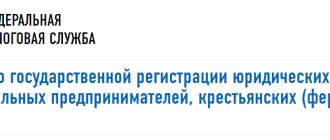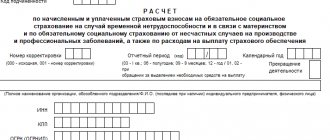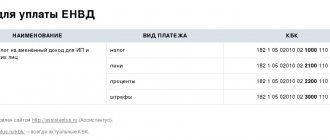In this article we will not touch upon reports that are not related to UTII and are submitted depending on other factors (6-NDFL, SZV-M, etc.). We will talk about the declaration - an integral part of the activities of imputations
Despite the fact that this special mode greatly simplifies the work of an accountant, you will still have to report. In this article we will not touch upon reports that are not related to UTII and are submitted depending on other factors (6-NDFL, SZV-M, etc.). We will talk about the declaration - an integral part of the activities of imputators (clause 3 of Article 346.32 of the Tax Code of the Russian Federation).
Let us remind you that, subject to certain conditions, any taxpayer can voluntarily switch to imputation (clause 3 of Article 346.29 of the Tax Code of the Russian Federation).
Order of the Federal Tax Service of Russia dated June 26, 2018 No. ММВ-7-3/ [email protected] approved the current declaration form. Each time you prepare a reporting form, check that it is up to date.
The declaration is submitted before the 20th day of the first month of the next quarter (clause 3 of Article 346.32 of the Tax Code of the Russian Federation). It turns out that the months for declaring income will be April, July, October and January. Sometimes the reporting deadline falls on a weekend or holiday, in which case the law allows reporting on the first working day after legal non-working days (Clause 7, Article 6.1 of the Tax Code of the Russian Federation).
Kontur.Extern will tell you when to pay UTII and help you calculate the amount of tax.
Send a request
Where and how to submit a declaration
The declaration must be sent to your Federal Tax Service at the place of registration of the company (clause 2 of Article 346.28 of the Tax Code of the Russian Federation). This means that if only their own separate divisions are involved in activities subject to UTII, and the head office is located in a different tax system, there is no need to submit a declaration with the data of the “separate divisions” to the address of the head division (clause 5.1 of the Completion Procedure).
If the imputed person operates in one region, one declaration must be submitted to the inspectorate in whose territory he works (the number of units does not play a role here).
If the imputed person works in different places, but are subject to the same inspection, he must also submit one tax return.
Working in different regions belonging to different tax inspectorates obliges special regime officers to submit declarations to each of the inspectorates.
There are three ways to submit an imputation declaration:
- Through the Internet.
- By post, enclosing a copy in the letter (it is safer to issue a letter with a valuable inventory).
- Bring it in person to the Federal Tax Service (clause 3 of Article 80 of the Tax Code of the Russian Federation).
If the declaration is not submitted on time, the company (IP) may be punished financially (Article 106 of the Tax Code of the Russian Federation). The fine will be 5% of the amount of tax declared. The Federal Tax Service will take a fine for each overdue month, and it doesn’t matter whether it’s a full month or not. The current legislation establishes the amount of maximum (no more than 30% of the tax) and minimum (1,000 rubles) fines for violating reporting deadlines (Article 119 of the Tax Code of the Russian Federation). Mitigating circumstances presented by the taxpayer may reduce the fine (clause 1 of Article 112, clause 3 of Article 114 of the Tax Code of the Russian Federation).
The main danger of not submitting the approved form on time is that the tax inspector may block the company's bank account. This will certainly happen if the delay is more than 10 working days (clause 2 of Article 76 of the Tax Code of the Russian Federation).
How to find out the checkpoint of an enterprise
The checkpoint must always be in the details of the legal entity, but if for any reason it is missing, then the management of the enterprise must contact its tax office with a corresponding written request. In this case, tax officials will ask the applicant to present a passport and TIN and in a few days will issue an extract from the Unified State Register of Legal Entities.
In addition, information about all assigned checkpoints can be obtained on the official website of the Federal Tax Service on the “Information about legal entities” page, which also fully contains information from the State Register of Legal Entities.
How to fill out a declaration
It is not at all difficult to reflect the data in the declaration, and its composition is not so massive - just three sections and a title page.
An important rule for all sections: cost indicators are indicated in whole rubles, and physical indicators - in whole units, using mathematical rounding. For example, 50 kopecks should be rounded to the full ruble.
All pages of the declaration are numbered. Page numbers are recorded using the column provided for this, which has three cells. So, for example, the fifth page is “005”, the eighth page is “008”, etc.
First you need to fill out section 2, then section 3, and section 1 will be the final one.
Title page
The first sheet will tell inspectors basic information about the taxpayer that can be used to identify him. In particular, these are:
- TIN and checkpoint;
- adjustment number (“0” indicates the primary declaration, and all adjustments are submitted with a serial number, starting from one);
- tax period (for example, III quarter);
- reporting year;
- code of the tax office where the declaration is submitted (the treasured numbers are in the notice of tax registration, the code can be clarified in person by contacting the Federal Tax Service);
- code of the place of submission of the declaration at the place of registration of the company (Appendix 3 to the Completion Procedure);
- company name or full name (in full) individual entrepreneur;
- OKVED;
- reorganization (liquidation) code and INN/KPP of the company (to be filled in only if there is a real fact of reorganization or liquidation, otherwise just cross out the cells);
- phone number;
- number of pages of the declaration and supporting documents;
- confirmation of the authenticity and completeness of information (code “1” - if the declaration contains the signature of the director, code “2” - if the signatory is a representative of the company);
- Full name of the person who signed the declaration and the date of signing. If the declaration is endorsed by the head, the organization’s seal (if any) is additionally affixed. If the document contains the signature of a representative, a seal is not affixed, but the details of the document confirming the right to sign are indicated. In a situation where the signatory of the declaration is an employee of the representative (organization), he indicates his full name, signs, indicates the name of the organization - the taxpayer’s representative and the details of the document (power of attorney) that confirms his authority.
The title pages of different declarations are filled out according to the same principle. If you have ever submitted any tax form, you will not have any problems.
Decoding
The checkpoint is a 9-digit code indicating:
- tax code where the organization/division/branch was registered (first 4 digits);
- the reason why the organization/division/branch was registered (the next 2 characters), the reason code for a company of the Russian Federation from 1 to 50, for a non-resident company - from 50 to 99;
- tax registration number, which indicates the number of times the company has been registered for this reason (last 3 digits).
Section 1
The OKTMO code (line 010) can be automatically determined on the Federal Tax Service website.
Usually the code includes 11 digits, but there are companies that will have it a little shorter. In this case, the free cells are crossed out and the code will look like “27881249—”.
As for the values of the indicators in this section (line 020), they need to be filled out using the initial data of sections 2 and 3. The amount of tax due to the budget is reflected in line 020 (clause 2, clause 4.1 of the Filling Out Procedure).
If there are not enough lines with code 010, you need to fill in the missing number of sheets in section 1.
UTII: opening of a separate unit by the imputation officer
— When developing a business, “imputators” often open separate divisions. Should any regulatory authorities be notified of the opening?
Is it necessary to register as a UTII payer in this case? How to calculate and pay UTII and salary taxes? First, let's clarify what a separate unit is.
Thus, in accordance with paragraph 2 of Article 11 of the Tax Code of the Russian Federation, a separate unit is any territorially separate unit from the organization, at the location of which stationary workplaces are equipped. A separate division is recognized as such regardless of whether or not its creation is reflected in the constituent or other organizational and administrative documents of the organization, and regardless of the powers vested in the specified division.
Note. A workplace is considered stationary if it is created for a period of more than one month Article 209 of the Labor Code
Section 2
Companies and individual entrepreneurs conducting different types of activities or working in different municipalities must fill out section 2 separately for each type of activity and place of its conduct (for each OKTMO code) (clause 5.1 of the Completion Procedure). Let's say a company has its own canteen and parking lot. This means that the accountant will fill out two sheets for section 2 - separately for catering, separately for parking. Thus, there can be two, five, or ten sections number two.
On line 010 you need to note the code of the type of activity (there are 22 of them in total, Appendix No. 5 to the Filling Out Procedure). In particular, code “02” indicates the services of a veterinary hospital, and code “22” indicates the sale of goods through vending machines.
Lines 020 and 030 record the full address and OKTMO code, respectively. The values directly depend on the place where the business activity is carried out (Appendix No. 6 to the Filling Out Procedure).
On line 040 the basic profitability is entered. It has a different meaning for each spectrum of activity. The highest profitability is established for services provided to car owners (repairs, maintenance and car washing) - 12,000 rubles. And the lowest rate is only 50 rubles, and it is set for parking lots. The basic profitability may change along with the Tax Code of the Russian Federation; it can be clarified in Art. 346.29.
On line 050 you need to provide the value of the deflator coefficient K1 (it changes every year).
On line 060 you should indicate the value of the adjustment coefficient of basic profitability K2, which comprehensively takes into account the nuances of conducting business. K2 is different in different regions.
In column 2 of lines 070–090, a physical indicator is noted (this could be the area of a parking lot or light-emitting surface, the number of retail spaces, etc.) In column 3 of lines 070–090, the Federal Tax Service inspector will find the number of calendar days of operation of a company or individual entrepreneur in the month of registration ( deregistration) as a UTII payer. If during the tax period the special regime officer did not register or deregister, column 3 is crossed out. In column 4, you should indicate the tax base (the amount of imputed income) for each month of the quarter, taking into account the actual duration of work in each month of the tax period.
Line 100 reflects the tax base (the amount of imputed income) for the quarter. It is clear that the value of line 100 is the sum of lines 070–090 of column 4.
Show the current tax rate in your region on line 105.
On line 110 the tax amount for the quarter is written (the product of the values of line 100 and line 105).
What you need to know ↑
Despite the fact that both individuals and legal entities have the right to apply a single tax, there are some differences in the procedure for recording, taxing and collecting UTII from business entities such as individual entrepreneurs and LLCs.
It should be emphasized that both the first and the second have the right to apply “imputation” only if they are engaged in the above types of activities and do not exceed the limits established by law.
Find out where the receipt for payment of UTII for individual entrepreneurs is obtained from the article: deadline for payment of UTII. Where to get the K1 deflator coefficient for UTII for 2021, read here.
The value of K2 according to UTII for 2021 (table), see here.
The tax rate and the formula for calculating it are the same for both forms of business. It makes sense to consider their differences in more detail.
For an individual entrepreneur
Many individual entrepreneurs choose UTII as a convenient tax regime for their activities for the following reasons:
- This system frees them from having to pay property tax, VAT and personal income tax.
- The accounting system has been simplified and it is even possible to use a simplified chart of accounts.
- When conducting business without employees, you will have to fill out documents and pay contributions to the Pension Fund and the Social Insurance Fund only for yourself.
If a private entrepreneur decides to use the single tax system in his activities, then he needs to contact the Federal Tax Service at his place of registration and fill out an application there using the UTII-2 form.
Section 3
On line 005 you need to indicate the taxpayer's attribute - there are only two of them. For individual entrepreneurs who do not make payments to employees, code “2” is provided, for all other categories - code “1”.
The amount of the single tax is reflected in line 010 and is calculated as the sum of the indicator values on line 110 of all completed sheets of section 2.
On line 020 you need to indicate the amount of insurance premiums and hospital benefits. By the way, you can reduce the tax on them (clause 2 of Article 346.32 of the Tax Code of the Russian Federation).
On line 030 the amount of fixed insurance premiums of the individual entrepreneur is written.
Line 040 reflects the amount of expenses for the purchase of cash register equipment.
Line 050 will tell you about the total amount of tax payable to the treasury.
The formula for calculating line 050 depends on the indicator of line 005. If there is a “1” there, in line 040 write down the difference between lines 010, 020, 030, 040. Please note that the tax amount found cannot be less than half of the amount in the line 010. The code “2” in line 005 indicates that you need to subtract lines 030 and 040 from line 010. Check that the resulting amount is not less than zero.
Checkpoint in a payment order for UTII for a separate division
The procedure and conditions for assigning, applying, as well as changing the taxpayer identification number when registering or deregistering legal entities and individuals. Note. The procedure was approved by Order of the Ministry of Taxes and Taxes of Russia dated March 3, 2004 N BG-3-09/178.
Thus, according to these regulations, in a payment order when transferring UTII for a separate division, you have the right to indicate the checkpoint of the parent organization (that is, on the basis of a registration certificate). In this case, in the line “Purpose of payment” you need to reflect information about for which division and for what period the tax is paid. The same position is shared by the arbitrators (see, for example, Resolution of the Federal Antimonopoly Service of the West Siberian District dated October 5, 2005 N F04-7013/2005(15564-A75-15)).
However, due to the fact that this issue is controversial, you can clarify the information at your tax office.
Our organization has separate divisions located in the territory under the jurisdiction of one inspection.






